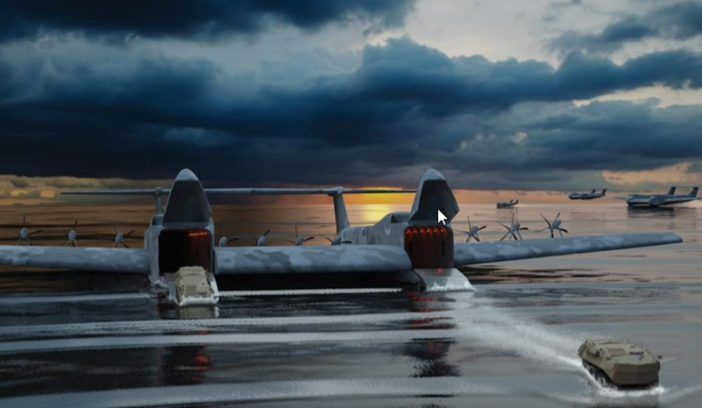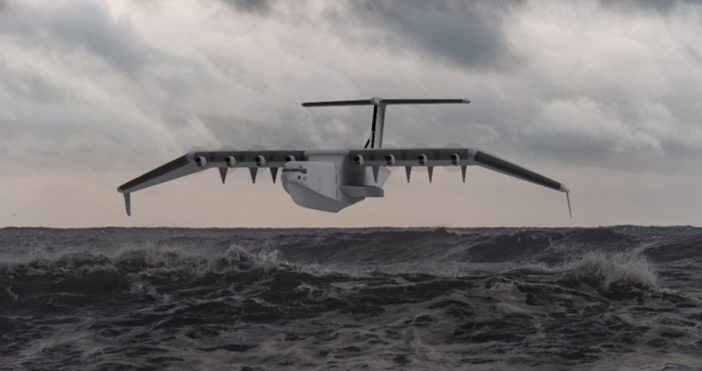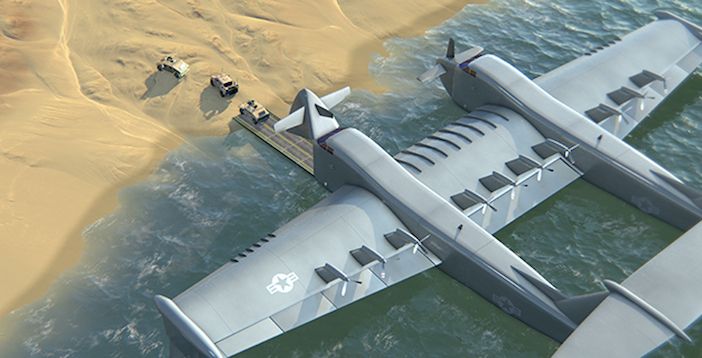The US Defence Advanced Research Projects Agency (DARPA) has picked Aurora Flight Sciences and General Atomics to develop two concepts for a heavy-lift seaplane – Liberty Lifter.
The Liberty Lifter program, which was initially launched last May aims to develop a long-range, low-cost transport aircraft that uses the wing-in-ground (WIG) effect to have better maneuverability and operational capabilities than existing transport aircraft.
The WIG effect is an aerodynamic concept first used by Soviet-era aerospace engineers in the 1980s for large cargo seaplanes. WIG was later investigated by DARPA and Boeing engineers in the USA.
The planned Liberty Lifter demonstrator will be a large flying boat similar in size and capacity to the C-17 Globemaster III transport aircraft, with the ability to carry up two USMC Amphibious Combat Vehicles (ACV) or six 24ft container units.
Other specifications for the Liberty Lifter include the ability to take off and land when waves are up to 8ft high, to sustain on-water operation when waves are up to 13ft high, and the capability for extended flight close to the water in ground effect, with the capability to fly out of ground effect at altitudes up to 10,000ft above sea level.
The seaplane demonstrator selected for development is planned to make its first flight in around five-years time.
DARPA Liberty Lifter Program Manager Christopher Kent said, “We are excited to kick off this program and looking forward to working closely with both performer teams as they mature their point-of-departure design concepts through Phase 1.
“The two teams have taken distinctly different design approaches that will enable us to explore a relatively large design space during Phase 1.”
General Atomics (GA) is working with Maritime Applied Physics Corporation and Aurora Flight Sciences with Gibbs & Cox and ReconCraft to develop the Liberty Lifter designs.
The GA team has selected a twin-hull, mid-wing design to optimize on-water stability and seakeeping. It employs distributed propulsion using twelve turboshaft engines.

Aurora Flight Sciences’ design more closely resembles a traditional flying boat, with a single hull, high wing and eight turboprops for primary propulsion. The high-wing monohull seaplane will be designed for affordable full-scale production and extended maritime operations with a robust and adaptive control system, according to Aurora
Graham Drozeski, vice president of government programs at Aurora Flight Sciences said, “Developing an X-plane requiring innovative solutions and complex controls is at the core of our expertise.
“We look forward to solving this challenge and providing a new strategic capability to support tomorrow’s warfighter.”
The Aurora and Gibbs & Cox design team will work from Aurora’s headquarters in Manassas, Virginia with early test structures fabricated in shipyards in the Pacific Northwest area.

The initial DARPA contract will see the companies develop both ideas to a conceptual design review stage over 6 months, followed by 9 months to mature the design to a preliminary design review stage. An additional three months for manufacturing planning and test/demonstration planning reviews.
The next phase of the program is scheduled to start in mid-2024 with continued detailed design, manufacturing, and demonstration of a full-scale Liberty Lifter X-Plane. DARPA said it anticipates teaming with the Department of Defense and international partners for these activities and further development of the Liberty Lifter concept into an operational vehicle.





